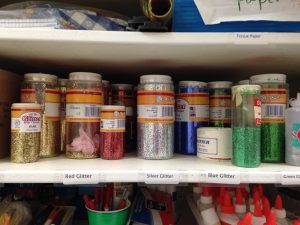I subbed in a second-grade classroom yesterday, a cheery, book-filled room in a middle- to upper-middle class suburb. My hours flew by, that proverbial cakewalk in a land of plenty. I commented to my husband on the academic virtuosity of my twenty-some charges and the resulting ease of my day. Many of those kids can add three-digit numbers. They read and write in clear, legible prose.
He came back with a comment I’ve heard often before: “It’s the parents. That’s why those kids will always do better than the kids in…” he named an academically scary suburb. He went on to observe that giving more money to the scary suburb would never solve its academic problems and would not catch those children up to students in more prosperous suburbs near them.
He’s right. He’s wrong. I don’t think we can catch up academically- and financially-disadvantaged students by simply giving schools money. Readers know I believe in extending the school year and day for students who have fallen significantly behind the pack. But that’s another post.*
My husband’s right that students with actively involved, motivated parents enter school at an advantage, sometimes a gargantuan advantage. I’d bet most of the kids in yesterday’s classroom started kindergarten knowing rudimentary writing and math, as well as many more vocabulary words on average than inner-city counterparts. The research supports this vocabulary gap. In some zip codes, kids overall enter school with thousands more words at their disposal than kids in other zip codes.
Here’s where I think my husband my be wrong: The research also shows that those kids in zip codes with larger vocabularies keep learning new words faster and that the documented vocabulary gap widens with time. We don’t close the achievement gap. We can’t even keep the gap from expanding.
Money might help address that widening of the gap. Let me offer a few examples from yesterday: I had a teaching assistant to help me with these twenty-five second-graders. I also had a teaching assistant when I acted as a kindergarten teacher in the same district a few days ago. These assistants were not the one-on-one paraprofessionals that sometimes can be found in financially-disadvantaged districts, hired to help seriously autistic or otherwise handicapped children who cannot function without aid. No, these teaching assistants were specifically hired to help the whole classroom.Because of yesterday’s teaching assistant, I was able to do small group and individual math tutoring while the TA wandered the room making certain other students were on task with their independent work. That small group work and tutoring often does not happen in disadvantaged schools, or it is scheduled after school when students may opt not to attend or parents may be unable to pick them up.
Because of yesterday’s TA, we managed to almost seamlessly follow the teacher’s lesson plan. We did not do any make-work. We did not color or fill out worksheets. We practiced spelling, writing, and math without a break from the day before. In effect, these students lost no learning time. The TA knew exactly where the kids needed to pick up their lessons. She knew all their routines.
In poor districts, extra aides can seldom be found. My last middle school had one single aide to cover every bilingual class in the school. I saw her for a few minutes in the morning and at the end of the day. (I cleverly trapped her coat in my closet, thus ensuring her return.) Absent that knowledgeable teaching assistant — and not a single regular teacher in that district ever had an aide in my experience except to help severely disabled students — teachers must leave relatively foolproof plans — plans that leave students treading water rather than moving forward.
Why are students in less-advantaged districts filling out worksheets filled with familiar material? A Spanish teacher often does not know if her substitute will be able to speak Spanish. A chemistry teacher may be lucky to find an available replacement who has studied chemistry. Even when a substitute possesses necessary content knowledge, that sub may not have access to technology, or previous experience with materials or the specific content of that week’s lesson. To be safe, sub plans usually involve review of previous lessons, with provisions for students helping each other.
Teachers are out so often nowadays that I believe these differences are becoming magnified. I like to sub half-days. Most of these days come from meetings, especially data meetings, testing and professional development. It’s rare that I cover for someone with a doctor or dentist appointment. Kids in wealthy districts lose less learning time overall because of those teaching assistants, along with high levels of available technology.
And, oh, those little white boards made me sad yesterday. One year, I had those white boards, purchased from the Bilingual Director’s funds. I loved those little white boards with their markers. The kids loved them. I’d write problems on the board and kids would solve the problems on their boards as fast as they could. I usually gave rewards for finishing quickly or showing progress. Everyone enjoyed using the markers and erasers. Unfortunately, my financially-struggling district only gave me money for supplies during two of the last seven years, and with strings attached. For example, I could order out of one bilingual catalog.
I am sure some years I spent four figures on my classroom if we throw in cartridges for printers that were never supported and emergency food supplies. I don’t intend to whine, I’ll just observe that I did not use those little white boards often despite their utility and the kids’ interest. While the actual cost of a 9″ x 12″ dry-erase lap board runs only a few dollars. the damn markers can kill a budget. Good markers run about $1.00 apiece and cheaping out only creates trouble. Markers from dollar stores run dry in no time
Eduhonesty: In the land of plenty, bags of markers and even little erasers are everywhere. Sigh. So are IPads. Done with the work? Those middle- and upper-middle class kids have educational apps and software to burn. I can follow the lesson plan and direct the kids to useful software if they finish their work. They tend to follow directions, too. They are so used to software that they are not cheating to try to find games or entertainment. Online games and entertainment may still be scarcities in financially-challenged zip codes, but not in that comfortable zip code where I taught yesterday.
While parents remain huge factors in educational attainment, money may be much more important than many educational leaders and righteous parents acknowledge. Those kids in Zip Code $$$$ have so many more advantages than the kids in Zip Code $. The Devil is always in the details. The Devil is in those bags of markers. Marker running dry? In my classroom yesterday, all a boy or girl had to do was run to the Bag of Endless Markers.
I assure readers, the Bag of Endless Markers matters. We can’t quantify how much that bag matters, but not everything needs to be a statistic or number to count.
*By the way, welcome new readers. A fair number of people seem to have appreciated my last post. Please share that post on “Green Card Number Two” with friends. A special greeting to all the new readers in Poland.


